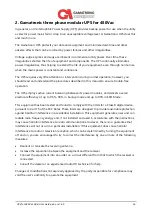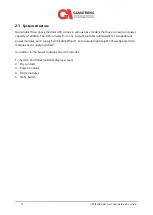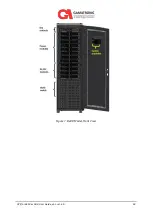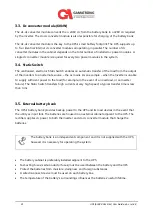
21
UPS for 480 Vac Grid, User Guide, doc. rel.4.0
3.3.
Dc converter module (60kW)
The dc-dc converter module converts the ± 240V dc from the battery bank to ±420V dc required
by the inverter. The dc-dc converter module is also responsible for charging of the battery bank
The dc-dc converter module is the key to the UPS's small battery footprint. The UPS supports up
to four identical internal dc converter modules all operating in parallel. The number of dc
converter modules in the cabinet depends on the total number of installed ac power modules. A
single dc converter module is required for every two power modules in the system.
3.4.
Static Switch
The centralized, electronic Static Switch enables an automatic transfer of the load from the output
of the inverters to an alternate source – the ac mains. As an example – when the Inverter is unable
to supply sufficient power to the load (for example, in the event of an overload, or an Inverter
failure). The Static Switch transfers high currents at very high speed; a typical transfer time is less
than 3 ms.
3.5.
External battery bank
The UPS's battery bank provides backup power to the UPS and its load devices in the event that
the utility ac input fails. The batteries are housed in an external cabinet adjacent to the UPS. The
rectifier supplies dc power to both the inverter and dc-dc converter module that charge the
batteries.
The battery bank is an independent component and it is not supplied with the UPS,
however it is necessary for operating the system.
The battery cabinet is preferably installed adjacent to the UPS.
Fast-acting fuses (semiconductor fuses) must be used between the battery and the UPS.
Protect the batteries from moisture, dampness, and foreign substances.
A safe disconnect device must be used on each battery box.
The temperature of the battery's surroundings influences the batteries' useful lifetime.
















































